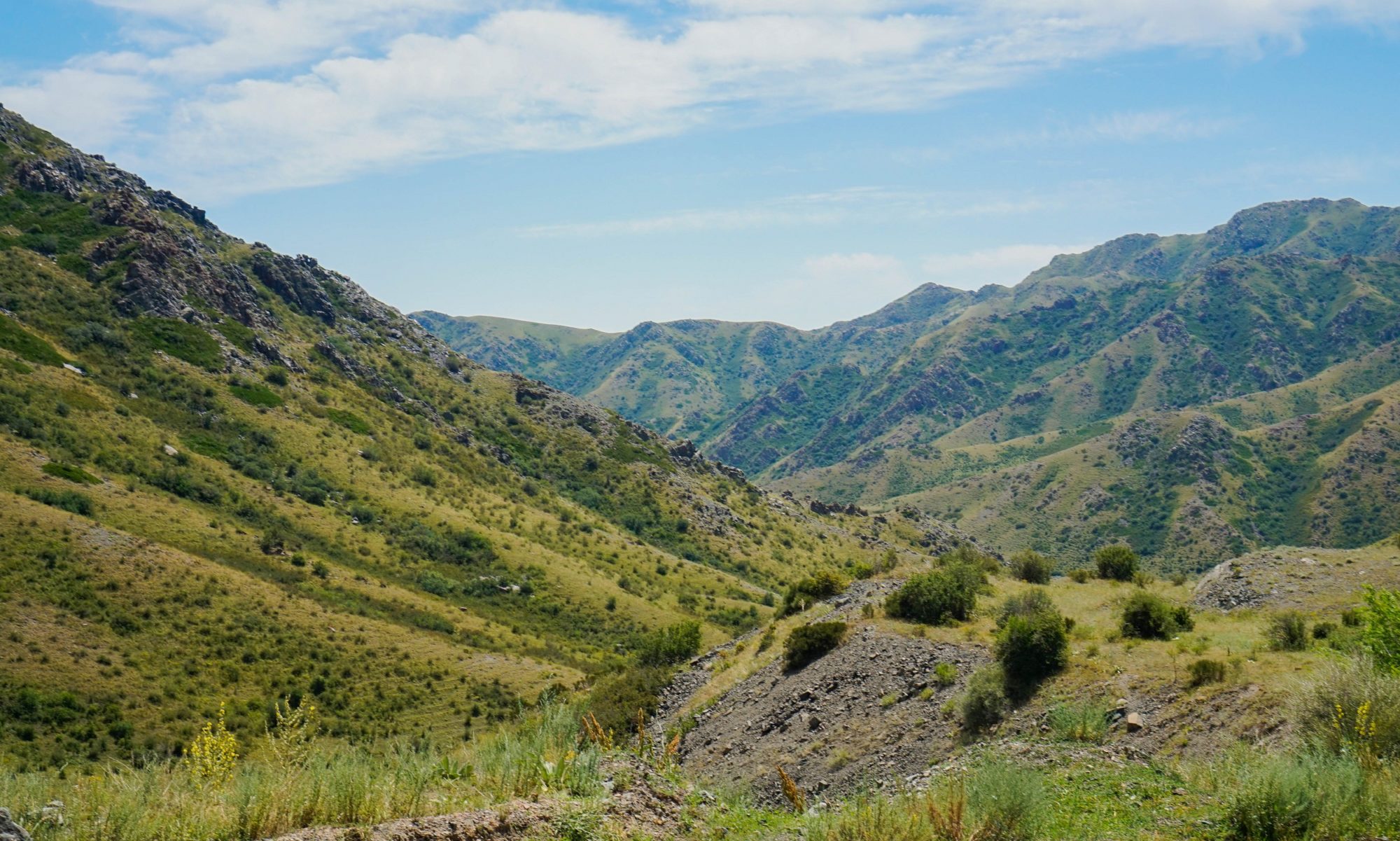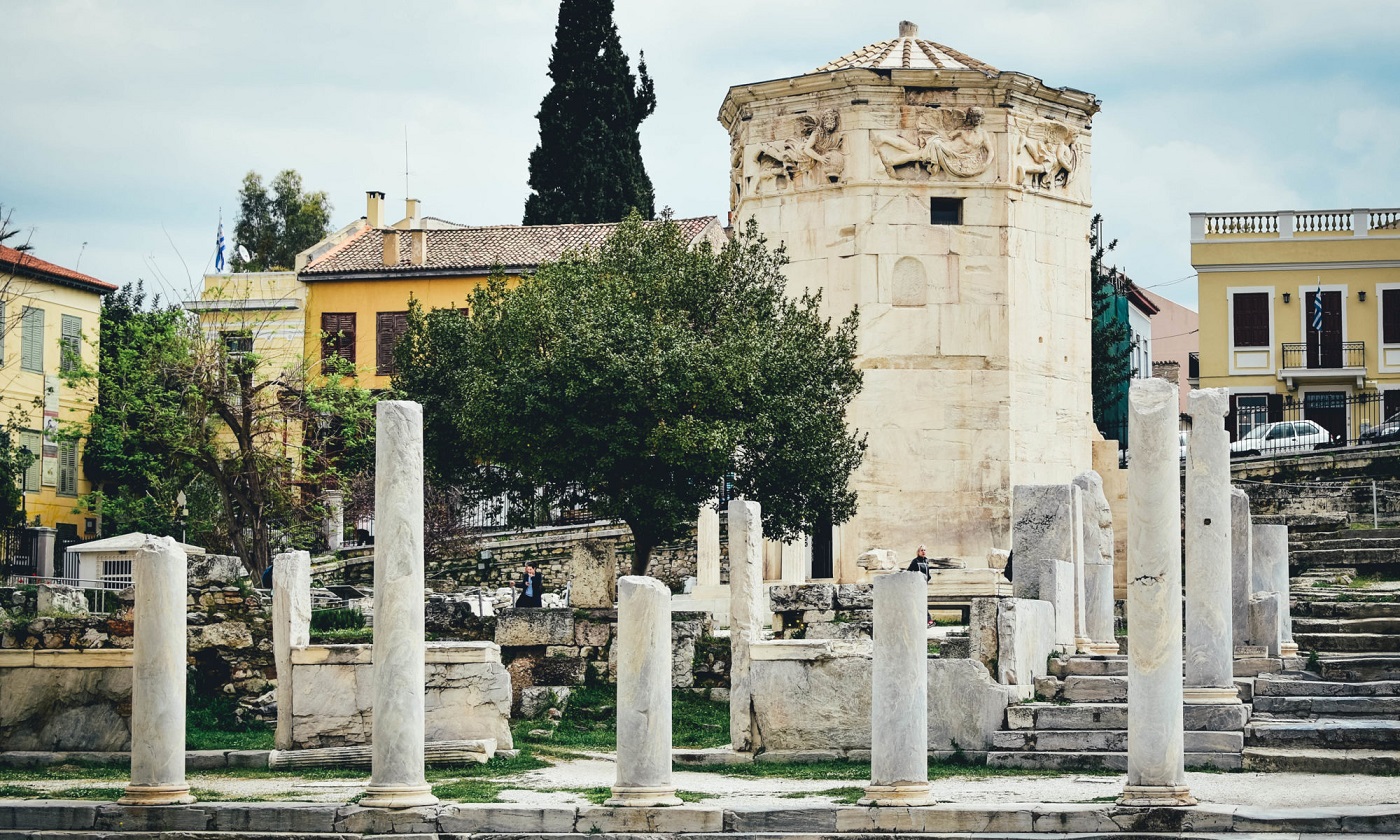Among the monuments and ruins of ancient Athens is a most curious structure. The Tower of the Winds not only served an aesthetic but also a scientific purpose. Housing sundials, a water clock, and a wind vane, the Aerides was for all intents and purposes – an ancient meteorological station and clock tower.
Concerning the Tower, its Shape, and its Function
Athens is primarily frequented by tourists due to its classical heritage. The acropolis is dotted with the ruins of classical Athenian temples and the Parthenon is a de-facto symbol of not only classical antiquity but also of modern Greece. Understanding the reverence held for the classical tradition in modern-day western societies, this is unsurprising. However, the city’s Roman and Byzantine respective heritages are equally (if not more) impressive. The reason being – many of the monuments from these periods were not lost to the ravages of time, and some of them are even still fully intact.

Lying between the Plaka and Monastiraki neighborhoods of Athens lies the former Roman Agora. Athens was still seen as a significant city after its conquest by the Romans during the 2nd century BC. Therefore, the conquerors continued to expand and develop the city, constructing impressive monuments such as a Roman Agora as well as the Library of Hadrian. As in the past, Athens continued to be a center of science and learning and the 40-foot tall Tower of the Winds is testament to that.
Constructed by the astronomer Andronikos Kyrrhestes around 50 BC, the large octagonal tower was referred to as a the horologion, or timepiece. This ancient meteorological station served as a sundial, water clock, and wind vane. Each of the eight sides of the tower contained friezes depicting the wind deities from Greek paganism. There were known as Boreas (north), Kaikias (northeast), Eurus (east), Apeliotes (southeast), Notus (south), Lips (southwest), Zephyrus (west), and Skiron (northwest). It was this that gave the tower its name Aerides (Αέρηδες), which in Greek means Winds. The tower was topped by a bronze statue of Triton, the Messenger of the Sea, his hand pointing in the direction from which the wind was blowing.
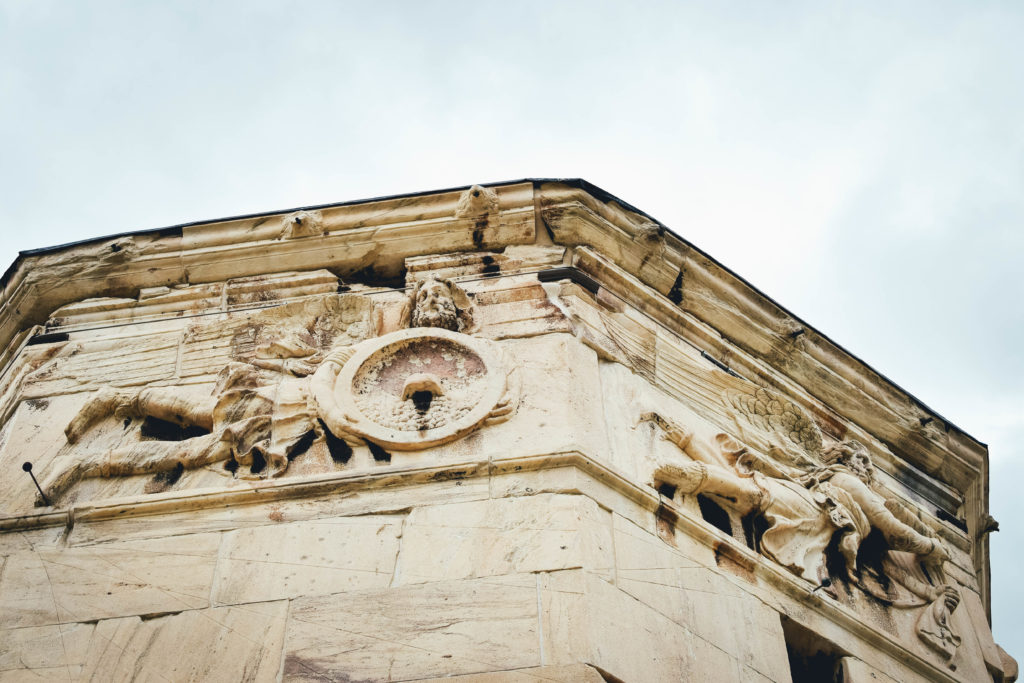
Beneath each frieze was a vertical sundial that would show the hour of the day when the sun shone upon it. In the interior, there was a clepsydra, or hydraulic clock, which was fed by water emanating from a well beneath the Parthenon. The clepsydra served to assist on cloudy days, which rendered the sundial useless. It is believed that the tower was built at such a commanding height in order to be easily visible to visitors to the agora.
The Half-Buried Tower
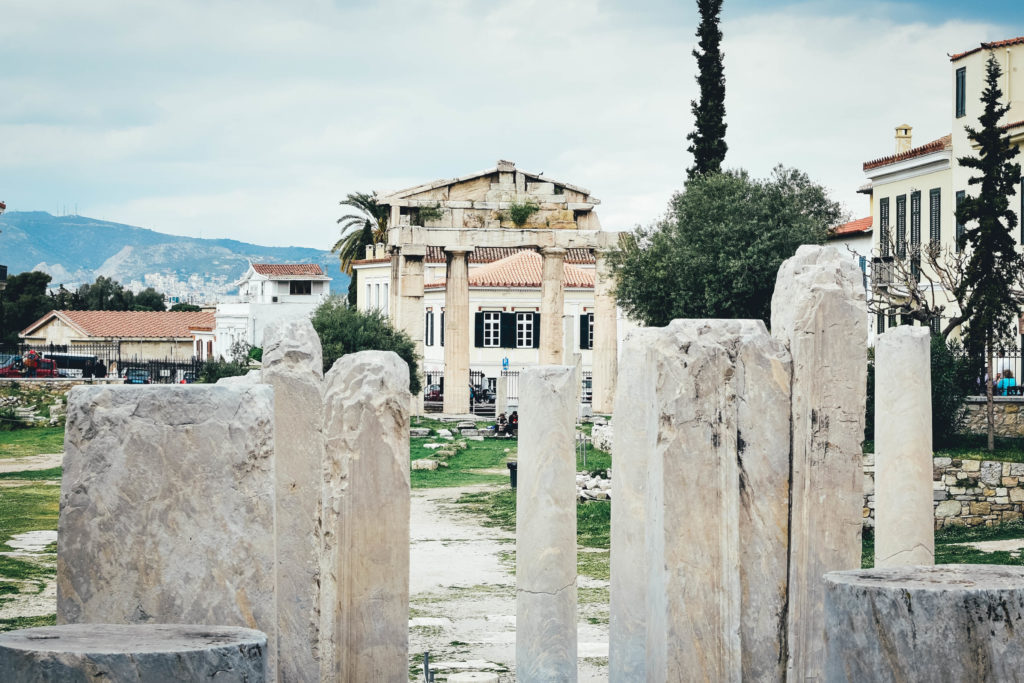
The Tower of the Winds stands rather prominently in the Roman Agora, even today. During my travel to Athens I was most curious as to how it managed to survive, compared to the rest of the agora. Rare among ancient ruins, it was even possible to enter and see the building’s interior and see the holes were mechanical devices were placed. As the story goes, the building’s survival can be traced to its incorporation into a Christian church a few centuries later. Archaeologists have even discovered a Christian cemetery next to the building. During the sixteenth century, travelers appeared confused as to whether the building was a temple to Aeolus or a Christian church.
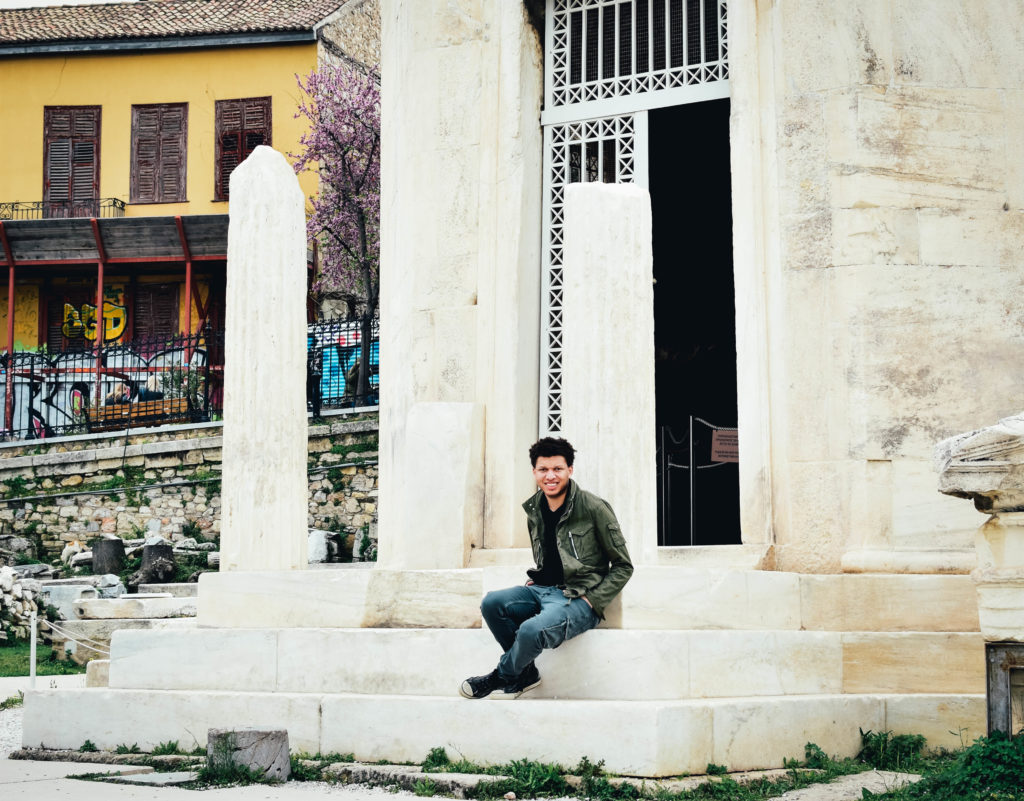
During the Ottoman period the structure was used as a place of worship by Sufi Muslim Whirling Dervishes. However, the building began to fall into disrepair and by the time the Turks were expelled from Athens during the 1820s, the former great city had long ago condensed into a small village. As for the tower, it had already been more than half buried underground. There are even Turkish inscriptions halfway up the tower, showing just how much earth and debris had accumulated inside. The Aerides would be excavated and renovated over the following couple of centuries, giving it its present-day shape. Today, while the sundials beneath the friezes are just barely visible, the tower is still the most prominent sight for modern travelers visiting the Roman Agora.
